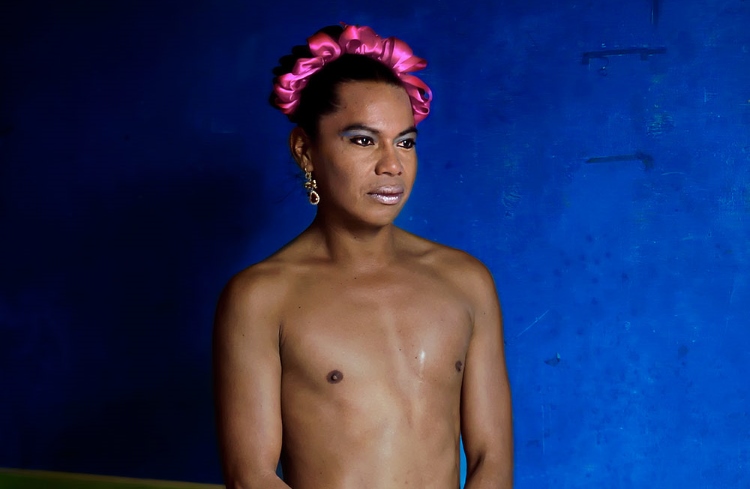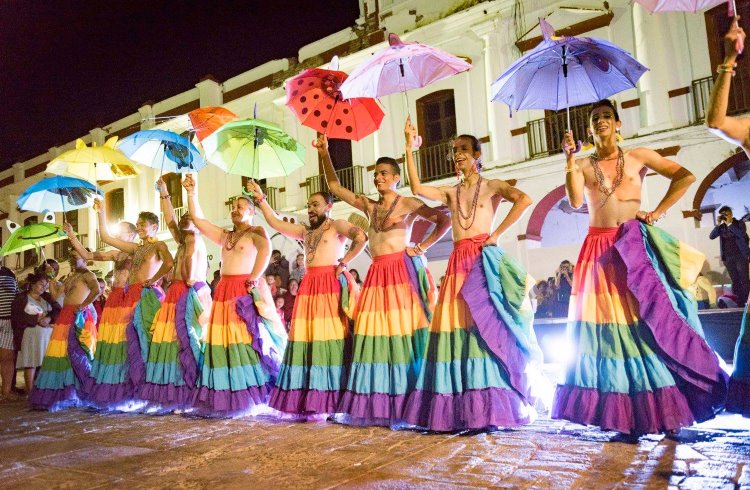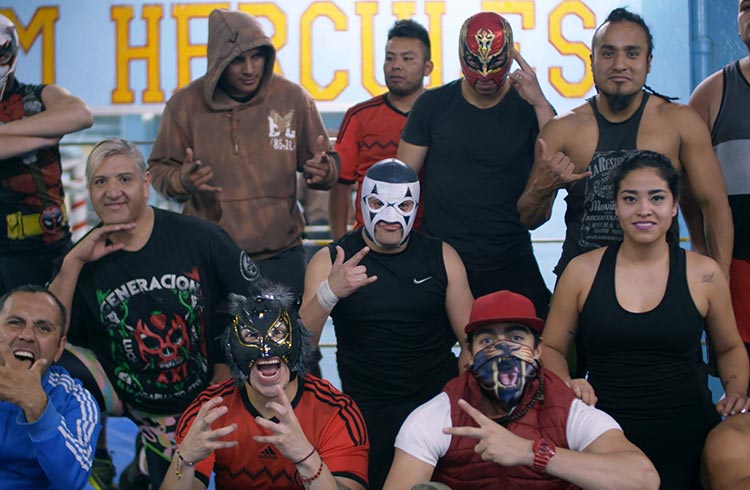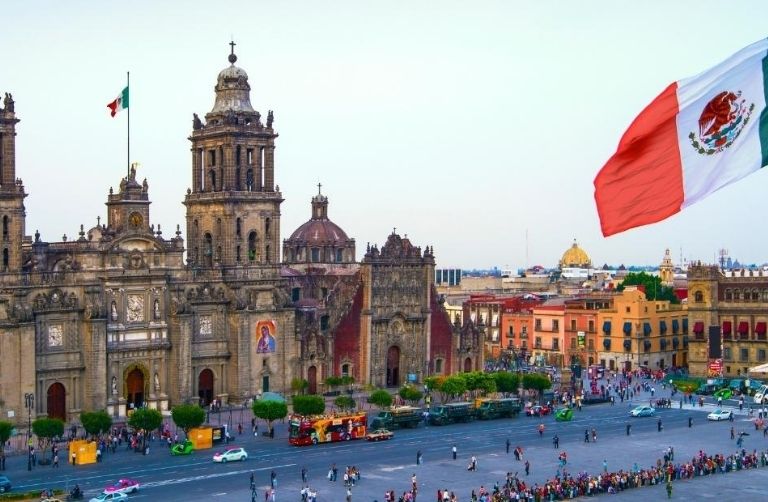The Muxes of Juchitán de Zaragoza
Joe Furey takes us to the Zapotec-majority town in Oaxaca where a third gender (muxe) has been a fact of life since pre-Colonial times.
 Photo © Mario Patinho via Creative Commons
Photo © Mario Patinho via Creative Commons
- The muxes of Oaxaca: Neither male nor female
- Juchitán de Zaragoza: A center of muxe culture
- Trip Notes
Putting your perspective to the test is a healthy thing. And there are few places better equipped to challenge your assumptions than Oaxaca, a state in southwest Mexico, where a lot of people have been doing things a little differently for a very long time.
To wax anthropologically for a moment, with 16 distinct ethnolinguistic groups – that is, 16 indigenous peoples with their own customs, traditions and languages – Oaxaca is one of the most culturally diverse places on the planet.
I got to know Oaxaca and its plethora of peoples well in the half-decade I was based in Mexico. I encountered cultures that were alive, not in the donning-fancy-dress-for-the-sake-of-tourist-pesos sense, nor in the form of a historical hangover, but in ways that continue to shine a light on how we live – and see ourselves – right now.
Which is where the Zapotecs, the largest indigenous group in Oaxaca, come in. The founders of a sophisticated pre-Columbian civilization some 2,500 years ago, they've retained many aspects of their cuture, including a third gender, kown as muxe (moo-shey).
The muxes of Oaxaca: Neither male nor female
I had been living for a month in Oaxaca City when I met Carmelita and Elena at the Basílica de Nuestra Señora de la Soledad. In that time, though I was and remain a badly lapsed Catholic, the Baroque church had seen more of me than my usual haunts – the mezcal bars – had.
My mother had recently died, and the basilica is dedicated to Our Lady of Solitude, the Virgin Mary in mourning. Above the altar, center-stage, her effigy stands, a look of infinite compassion on her face. I took comfort in her gaze, and placed myself beneath it every other morning.
Grief works on people in disparate ways. It opens them up or closes them down, and Carmelita and Elena rightly saw in my eyes a willingness to talk. Always immaculately turned out, dressed like twins in embroidered silk huipils, long skirts, and shawls, their hair shining black, they would join me at the back of the church. They were patient with my halting Spanish as we talked about everything and nothing, becoming close enough after a few weeks to share confidences. “We need to tell you something,” Carmelita said, “it’s very important, and we hope you won’t feel that we’ve misled you.”
They had chosen the right day for it. The power was off, and the dark had a confessional quality to it, though the caretaker had fashioned a contraption out of a bungee cord, metal coat hangers, and three mismatched flashlights on full beam to pick out the features of Our Lady. It made her look as if she were about to be abducted by B-movie aliens. And by its strange light, Elena and Carmelita took my hands.
The story they told me was a remarkable one. They were muxes (moo-sheys), a “third gender" born male but living as women. “Which is how we are described by professors anyway,” Elena said. They were from the Zapotec-majority town of Juchitán de Zaragoza, which is a five-hour drive away on the Isthmus of Tehuantepec, the narrow waist of land between the Gulf of Mexico and the Pacific Ocean. And they were in Oaxaca City to track down muxe friends who they suspected had been taken there by American sex tourists. “These Americans, they call Juchitán ‘Hoochie Town’,” said Elena in disgust.

Now in their early 30s, my friends explained that they had been raised by their grandparents, and had worn their current style of dress from a very early age. “Many muxes can’t remember being anything else. There was never any question that I was one,” Elena said. “Everyone knew. And they were pleased. It is considered a blessing if God gives a family a muxe.”
How modern, I thought. But I was wrong. No surprise there: though I’d been in Mexico long enough for the mosquitoes to lose interest in me, I was far from informed about its southwest corner. The muxe has been a fact of Zapotec life since pre-Colonial times.
“Local legend has it that St. Nicholas Ferrer, the patron saint of Juchitán, was carrying a sack of muxes,” Carmelita said. “He was supposed to distribute them evenly across the country. But it tore when he got to Juchitán and they all spilled out.”
Juchitán de Zaragoza: A center of muxe culture
The following week, I drove with Elena to Juchitán to see the fabled town for myself. I found it in high spirits. Preparations were underway for a four-day vela, a celebration of all things muxe, which is equal parts jamboree, pageant, and Mass (muxes are allowed to take communion in Juchitán, though it would be denied them elsewhere). The festival, which has been held each November since the early '70s, takes its name from its organizers, Las Auténticas Intrépidas Buscadoras del Peligro (the Authentic Intrepid Seekers of Danger), a group of muxe activists, educators, and entrepreneurs who keep an eye out for their own.
Muxes make up about 5% of Juchitán’s population of 80,000, but they are much more visible there than that suggests. Zapotec society is matrifocal. The men are mostly laborers, out of sight, in the fields or on building sites, sometimes on fishing boats. Women are the public face of the family, involved in day-to-day commerce, running stores and market stalls. Muxes do “women’s work” too, but, free from childcare obligations, they have more freedom to explore their career options. Many Juchitán households run on muxe incomes. Perhaps that’s why it’s considered lucky to have one in the family.
Elena introduced me to a few of her friends – some, like her, who looked, to foreign eyes, quintessentially feminine, and others who were more radical in the way they presented themselves (who knew a bare chest, a shaved head, and a double tutu would be a winning combination?). All were taller than the average Zapotec man, and many were broader built, as indeed the women generally are. When Zapotec parents recognize a “feminine” quality in their boy children, they are not just noticing a soft androgyny – a burlier frame can be a factor.
At Elena’s suggestion, I visited Salon Cazorla, a club/dance studio that’s been muxe-owned and -operated for 40 years, where I discovered Oscar, its proprietor and one of the founders of Las Auténticas, having a sly cigarette outside. But for a blousy guayabera, he was soberly dressed and, pointing at himself, he was keen to stress the variety of muxe life.
“There isn’t one kind of muxe. Some are born muxe, others become muxes. They are chosen or they choose. Some wear dresses, others just make-up. Some have relationships with men, some with women. But they are not gay or straight, because they are not men or women – they are muxe. That is important. Muxes are venerated here. They are free to pursue careers: teachers, nurses, hairdressers, party planners. They look after the elderly. Homosexuals who like to dress in ladies’ clothes come to Juchitan because they are persecuted in other towns. The more the merrier, I say, but strictly speaking, they are not muxes.”

Every day is Pride here, and whatever your sexual orientation or identification, the knowledge that there is a place on earth where all who live there are valued and all who don’t are welcome is enormously heartening.
I was sorry to make my apologies and leave the following morning, but work was calling. I plan to return for this year’s vela; to see old friends, of course, but also to toast Juchitán’s resilience. The town was almost leveled by an 8.1-magnitude earthquake – and 10 strong aftershocks – in 2017. The mayor said the buildings fell “just like dominoes”. But I’m told that it’s business as usual for the muxes. “Or unusual, as you would say,” wrote Elena.
Trip Notes
You can fly to Oaxaca City from Mexico City with Aeromexico for under US $150 ($3,060 MXN) return. Buses leave Oaxaca City for Juchitán several times a day for as little as US $19 ($338 MXN). The Vela de Las Auténticas Intrepidas Buscadoras del Peligro happens every year in mid-November.
Related articles
Simple and flexible travel insurance
You can buy at home or while traveling, and claim online from anywhere in the world. With 150+ adventure activities covered and 24/7 emergency assistance.
Get a quote


1 Comment
Interesting and well written! Thank you for sharing.